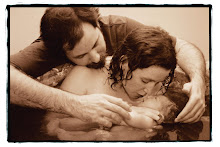...I suggest that women use ice packs for 24 hours to reduce swelling, and then switch to sitz baths several times daily using hot water with selected herbs. Nothing speeds healing faster than heat, and soaking is far superior to topical application as it more deeply stimulates circulation. Fresh ginger is a good addition to the solution; it helps relieve the itching that often occurs as stitches dissolve and the skin heals.
Here is how I recommend women take a sitz bath: Grate a 3- to 4-inch piece of ginger root into a large pot of water; simmer twenty minutes; strain and divide into two portions. Save one for later in the day, and dilute the first with water in a sitz bath. After soaking for twenty minutes, thoroughly dry the perineum and expose to air or sunlight for another 10 minutes before putting on a fresh pad (or use a hair dryer to speed the process). If the perineum feels at all sticky, use aloe vera gel to dry and soothe the tissues. Avoid vitamin E or other oil-based ointments until the skin is healed over, as these tend to keep edges from closing.
The wall-like ridge characteristic of episiotomy can be softened and relaxed with thumb or finger pressure, using a little oil (just make sure to wash your hands before handling the baby or breastfeeding). When scarring is extensive, evening primrose oil (found in health food stores) may significantly help to reduce it.
If adequately repaired and cared for, the perineum should be fully healed at six weeks no matter how extensive the damage...
— Elizabeth Davis
Excerpted from "Sex after the Baby Comes," Midwifery Today, Issue 62
07 January 2009
postpartum perineal healing
excerpted from Midwifery Today,
Labels:
herbs,
Midwifery Today,
perineal healing,
postpartum,
sitz bath
Subscribe to:
Post Comments (Atom)













No comments:
Post a Comment